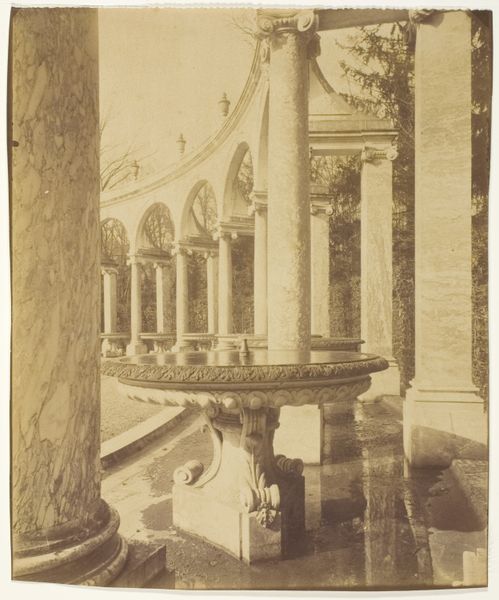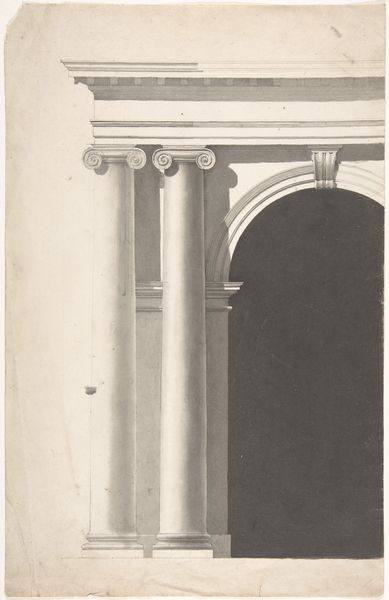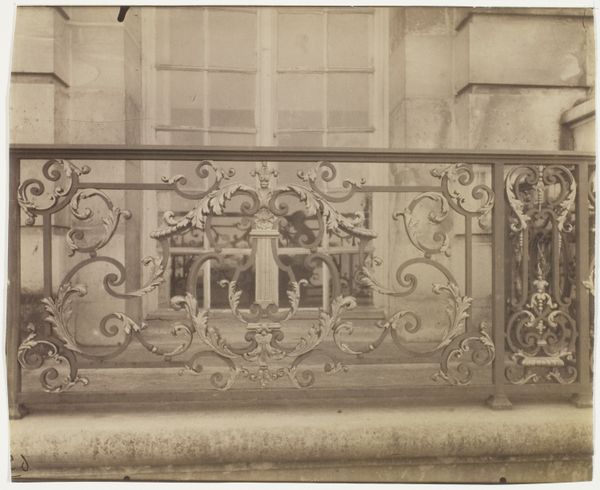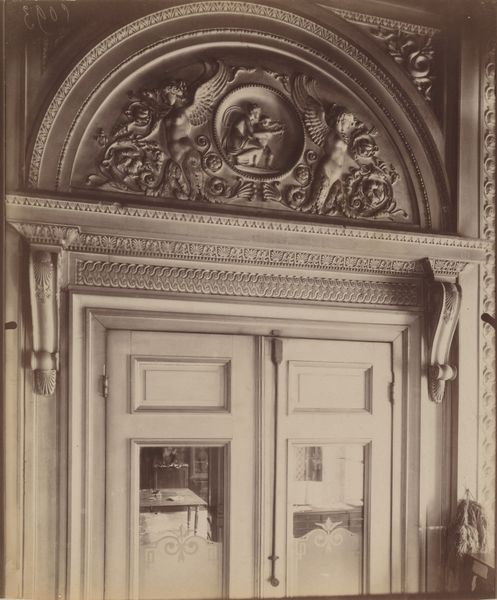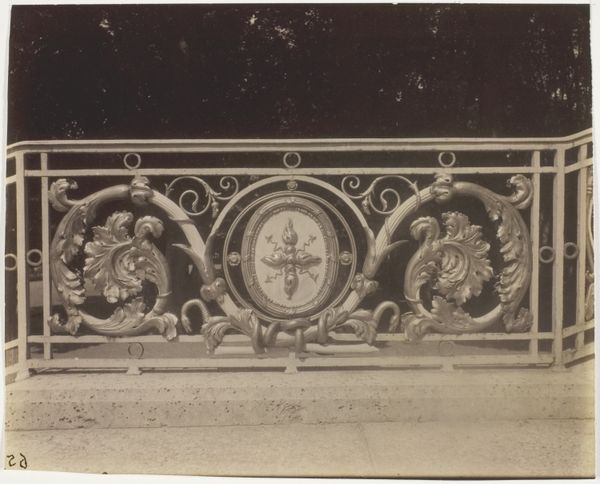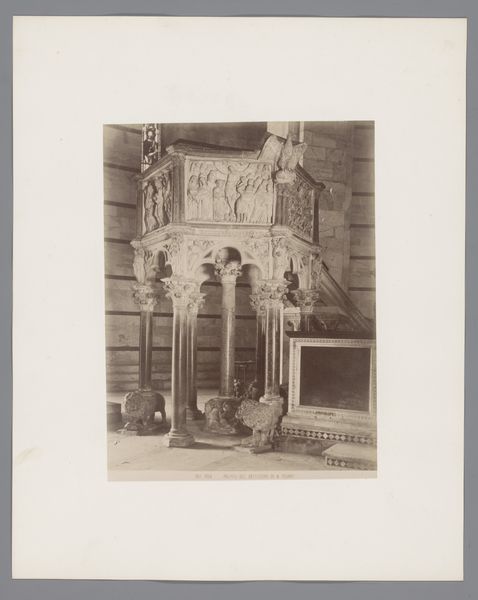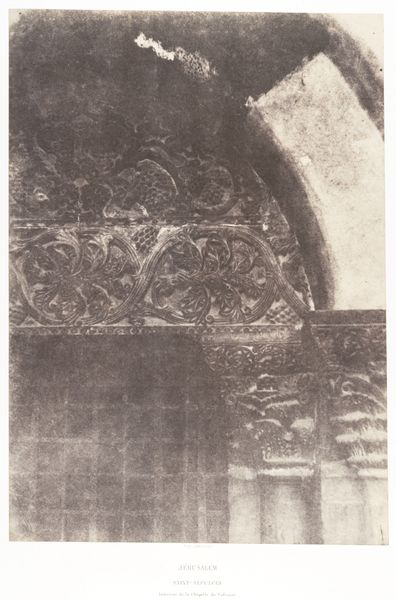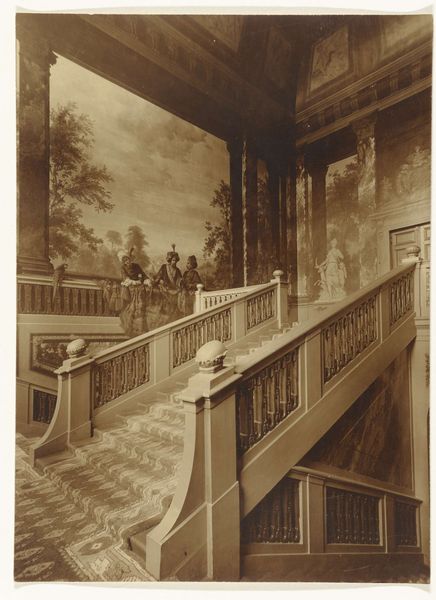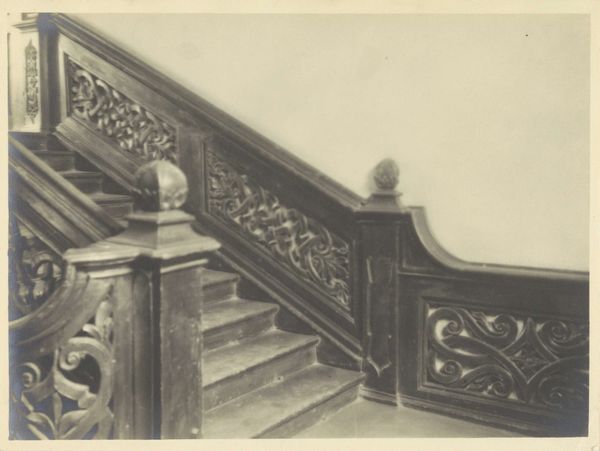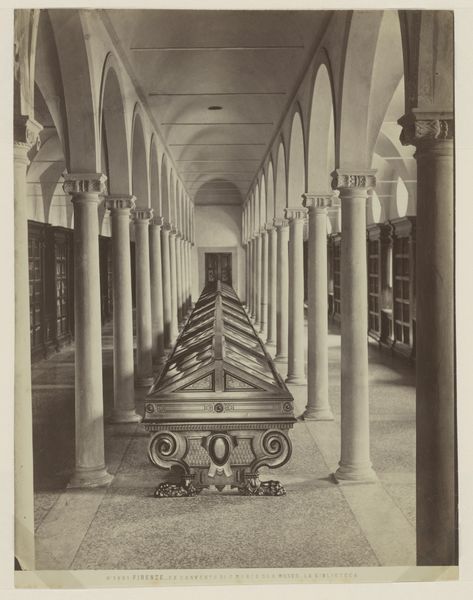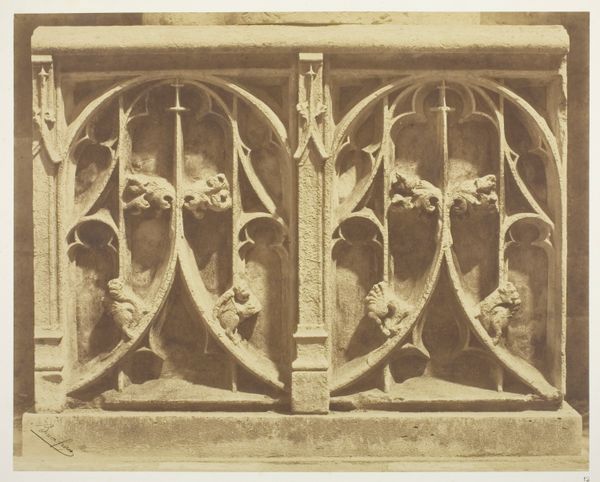
Dimensions: 22.2 × 17.8 cm (image/paper)
Copyright: Public Domain
Curator: Here we have Eugène Atget's "Versailles, Grand Trianon," a silver print he captured around 1905. It resides here at The Art Institute of Chicago. Editor: Immediately, I feel like I'm peering into a dream of old France. The ornate ironwork of the staircase is so heavy, almost tactile, yet softened by the muted tones. It makes you wonder about the footsteps that have worn down those steps. Curator: The photograph exemplifies Atget's objective approach. He was intensely interested in documenting architectural details. Note the strong diagonal created by the staircase and balustrade. This leads the eye deeper into the composition, towards the darkness beyond, a classical device. Editor: It’s so much more than objective, though. Look at how the light catches those grape and floral motifs—the hand of the artist, or craftsman in this case, becomes tangible through Atget's lens. The detail renders history as almost palpable. Don’t you feel like reaching out? Curator: In many respects, his works serve as visual records or inventories, and, true, the formal elements coalesce to invoke a specific time and place. We might apply semiotic analysis to unpack how these features denote aristocratic taste and the social hierarchy inherent in the architecture of Versailles. The railings themselves function as a signifier. Editor: Oh, yes, the signifier of “Keep out—unless you are royalty!”. But let’s get back to the *feeling*. This image is tinged with melancholic stillness. It's like the garden is holding its breath, anticipating something, or perhaps remembering glories long past. Do you ever think of how images themselves hold echoes? Curator: The way the photograph emphasizes the boundary between light and shadow evokes pictorialist strategies for heightening atmosphere, yet such readings risk imposing contemporary sensibilities on an essentially documentary practice. But there’s a tension, of course. Editor: Maybe it is documentary—but then every document reveals something more than just the facts. The photograph acts as both window and mirror, reflecting an outer world while simultaneously allowing us glimpses into ourselves. Atget, in capturing this fragment, has left space for everyone's impressions. Curator: I appreciate how the density of information conveyed in the formal design creates multiple viewpoints. These offer access into another world that goes beyond archival work. Editor: Yes, it’s lovely isn’t it? The architecture whispers secrets only Atget could overhear.
Comments
No comments
Be the first to comment and join the conversation on the ultimate creative platform.

